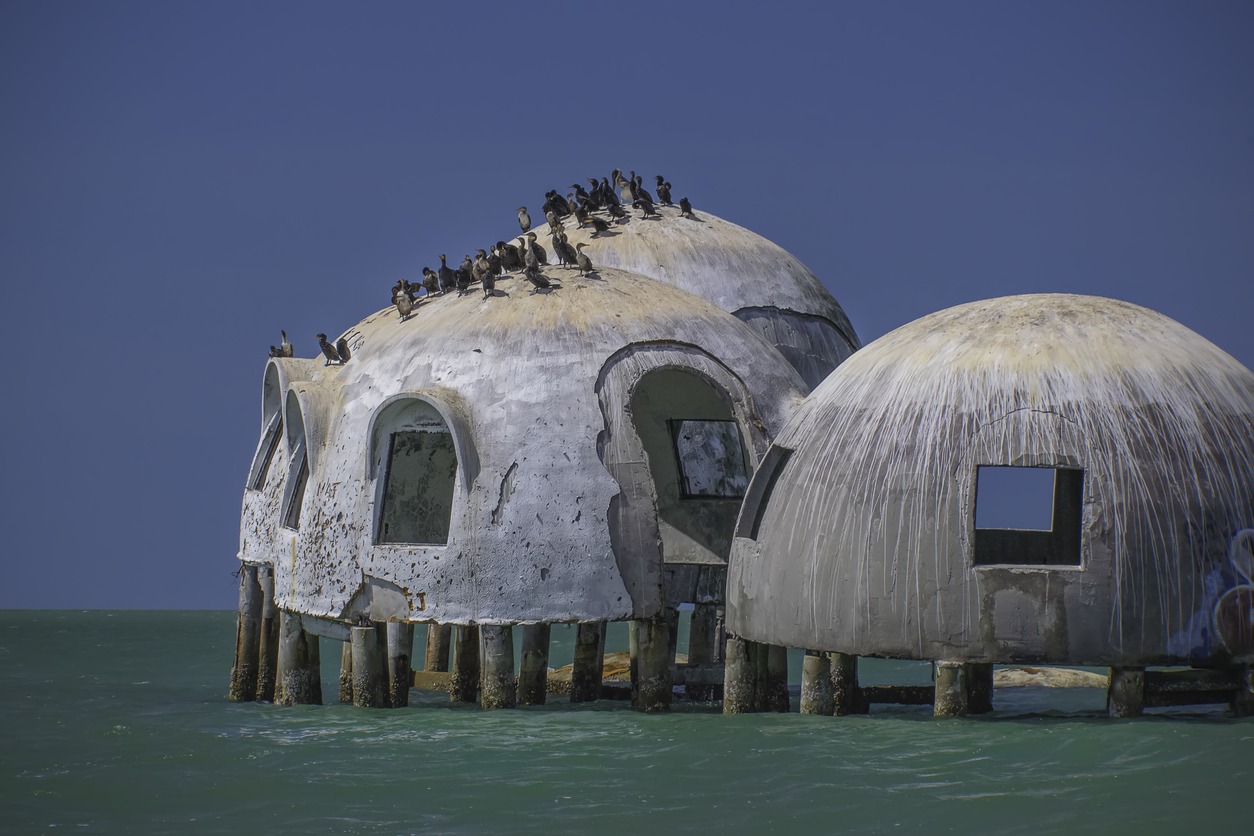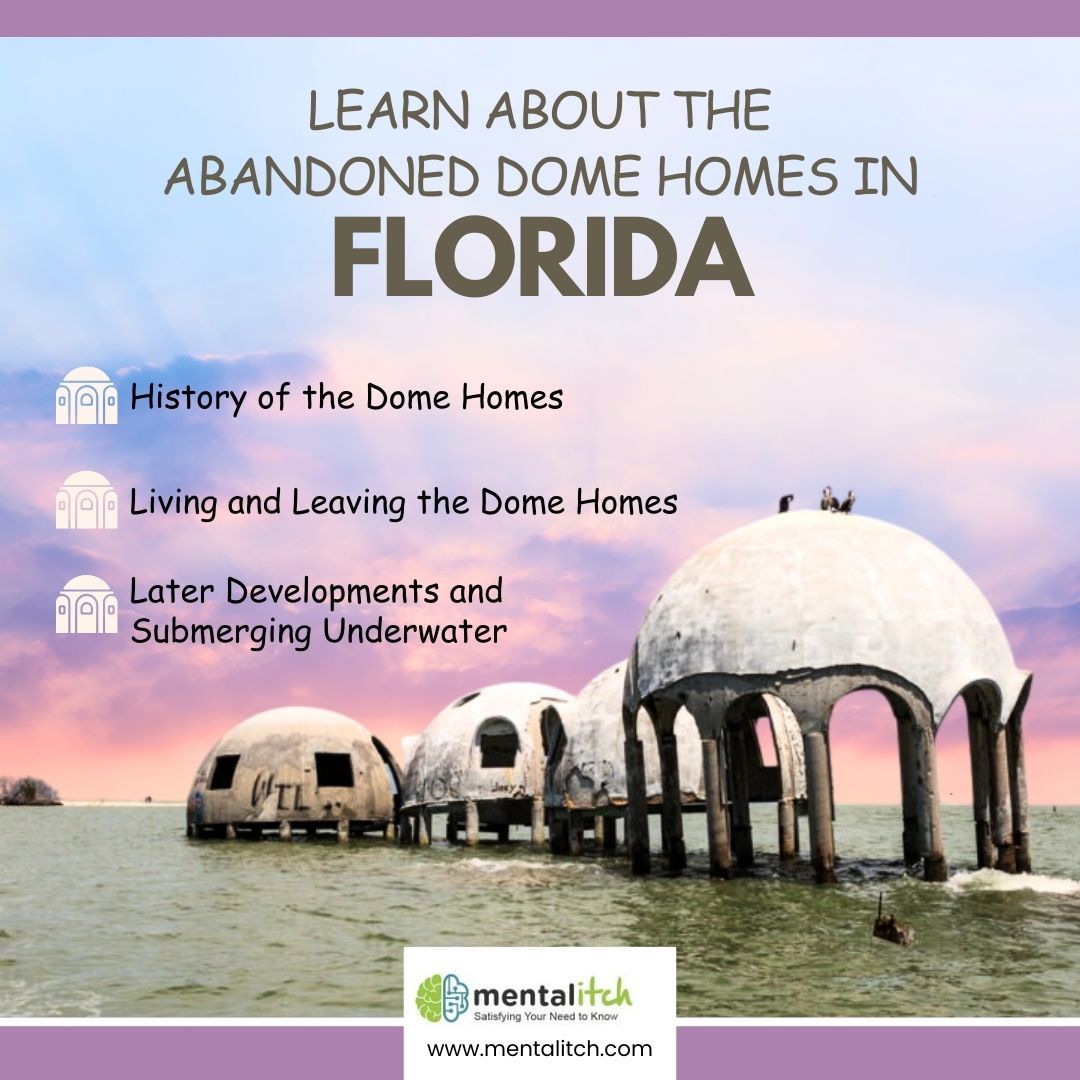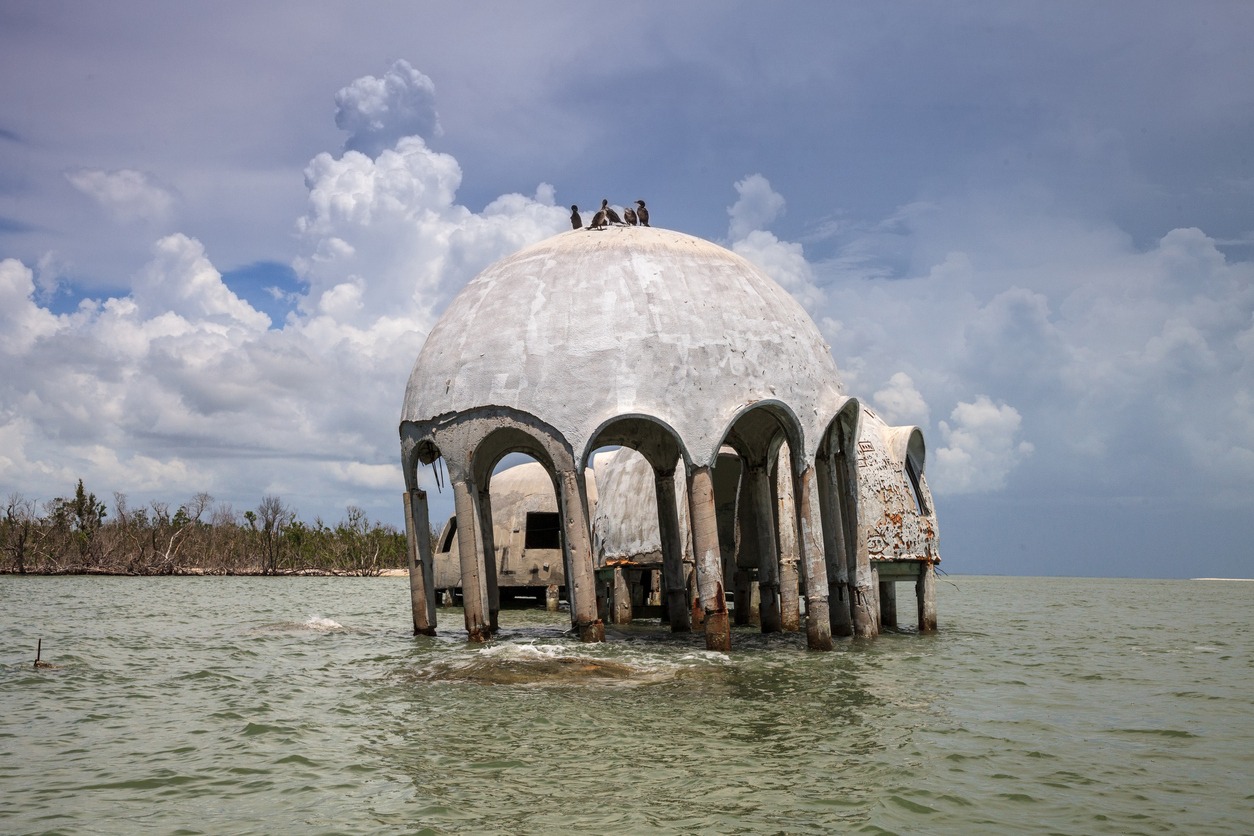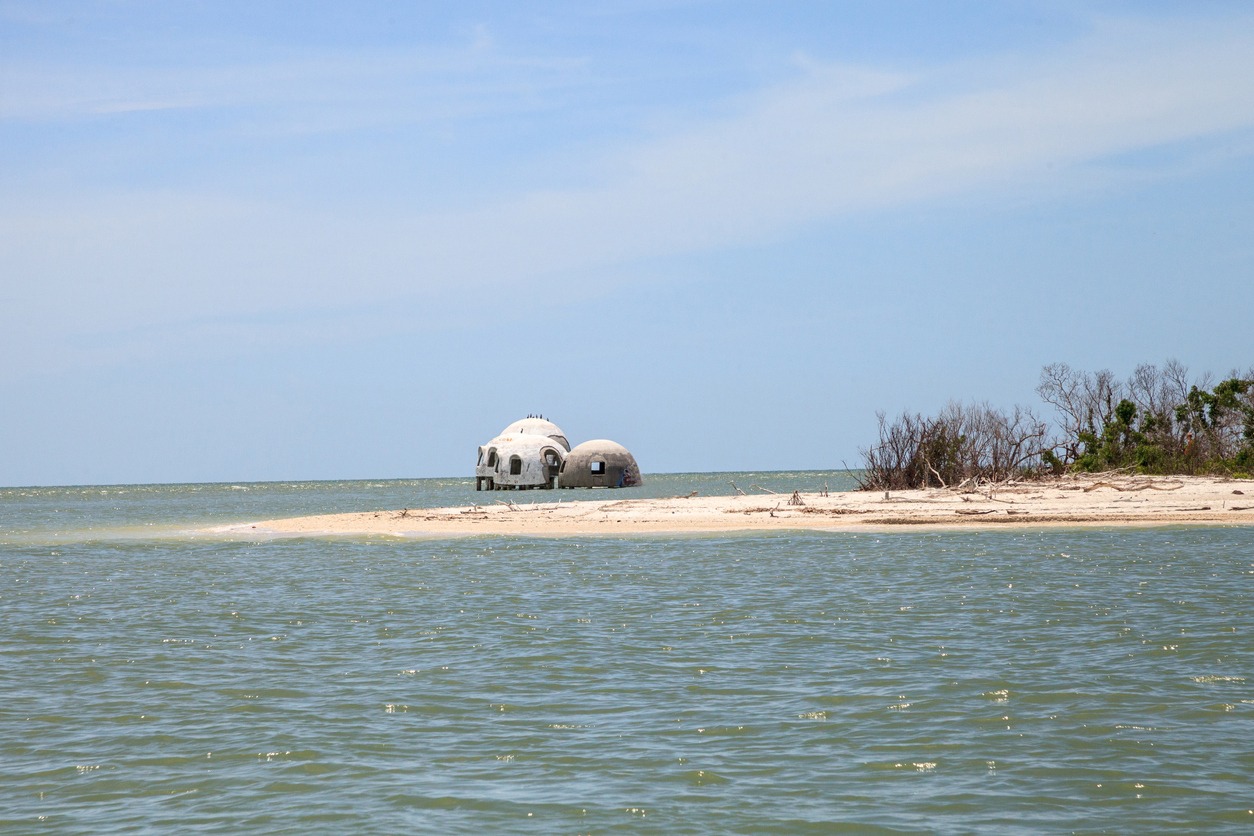Florida is known for its sunny beaches, theme parks, and vibrant nightlife. However, amidst the hustle and bustle of this popular tourist destination, lies a unique and mysterious piece of architecture that has captured the curiosity of many. The abandoned dome homes in Florida, also known as the “Igloo City”, have become a topic of fascination for locals and visitors alike.
These abandoned structures, scattered along the coast of Cape Romano, have a fascinating history and have sparked numerous theories about their creators and purpose. In this article, we will delve into the story behind these dome homes and explore the reasons for their abandonment.
History of the Dome Homes
The abandoned dome homes were built in the early 1980s in Cape Romano, Florida by retired oil magnate Bob Lee. His goal was to acquire enough land in this desirable location to construct a luxurious and relaxing vacation home.
The homes were meant to be self-sustaining and resistant to hurricanes, with their dome shape and thick concrete walls.
Before constructing the dome houses in Cape Romano, Lee took the initiative to first build a full-scale model on his own property in Gatlinburg, Tennessee. This structure, known as the Tennessee dome house, still stands to this day. He equipped the dome house with solar power capabilities and ensured its self-sustainability, which he applied to the Florida dome houses.
In 1980, Lee jumpstarted the project of constructing a home, a white-painted concrete structure that would serve as his primary residence. In order to transport the necessary supplies for the building, he made the strategic decision to purchase a barge, showcasing his meticulous planning and attention to detail. The resulting houses consisted of six sturdy and interconnected dome structures that formed the various rooms.
Some of these domes even featured multiple levels, adding to the unique and innovative design. The overall size of the house was an impressive 2,400 square feet (220 m2) and boasted three bedrooms and three bathrooms, providing ample space for comfortable living.
The sturdy concrete walls of the houses, built from locally sourced sand, not only provide a unique aesthetic appeal but also serve as a practical solution for hurricane protection. To further enhance the homes’ sustainability, gutters were installed to collect rainwater and drain it into a large tank for purification. This purified water is then pumped into all the home’s water-consuming appliances, ensuring an eco-friendly and cost-effective water supply.
Living and Leaving the Dome Homes
The dome houses were initially constructed as a vacation house for Bob Lee, his wife Margaret, and their children in 1984. However, just two years after its completion, the property was sold to another family.
Unfortunately, this family faced financial difficulties and was unable to maintain ownership of the home. As a result, the Lees made the decision to repossess the property in 1987 and subsequently made it their primary residence. This decision may have come with its challenges, but it ultimately allowed the Lees to create lasting memories and establish a sense of permanence in their family home.
The Lees renovated the dome houses and lived there until 1992. However, their plans were cut short by the catastrophic Hurricane Andrew which struck that same year. While the exterior of the dome houses remained unscathed, the interior was completely destroyed. This prompted the family to abandon the dome houses for good.
Later Developments and Submerging Underwater
In 2005, Bob Lee made the decision to sell his house to John Tosto, a Naples resident. Tosto had plans to renovate the home, and Lee offered his advice to construct a sea wall in order to prevent further erosion that had been occurring on the island for several years. However, Tosto decided against this option and instead chose to move the house to a higher piece of land on the island, using a crane and high concrete pillars for support.

This endeavor did not push through, since Tosto could not secure the permits required to move the houses. It was also around this time when Hurricane Wilma struck and destabilized the foundation of the dome houses, making the move more difficult to achieve.
During the 2010s, it was observed that some parts of the dome houses have already submerged underwater. This is a result of the foundations of the houses continuing break down due to erosion and changing weather conditions, as well as the failure to have the structures demolished in the previous years.
In 2022, the remaining domes collapsed at the height of the Hurricane Ian. The ruins of the dome houses now serve as reefs with thriving marine life.
Conclusion
The abandoned dome homes in Florida serve as a reminder of the power and unpredictability of nature. They also offer a glimpse into the innovative and eco-friendly designs of the past. While they have already submerged underwater, they continue to spark curiosity and draw visitors from around the world.



